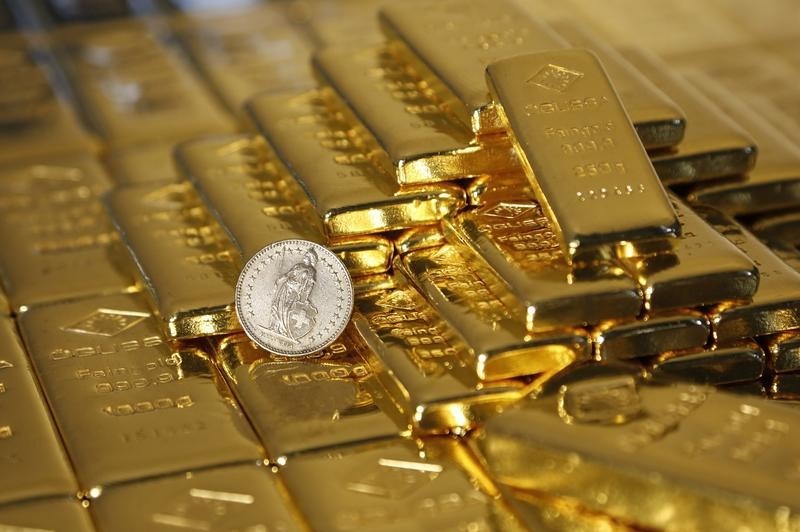By Geoffrey Smith
Investing.com -- Gold prices were on course for their highest close in nearly seven years on Friday after risk appetite withered in a delayed, but still powerful, response to U.S. economic data for the fourth quarter.
By 11:20 AM ET (1620 GMT), gold futures for delivery on the Comex exchange were up 0.6% at $1,580.35, while spot gold was up 0.3% at $1,581.79.
Risk assets such as equities and crude oil had initially ticked up on the report showing that gross domestic product growth stayed steady at an annualized 2.1% in the last three months of 2019. However, the headline figure masked deteriorating trends in both domestic consumption and investment, analysts said, and were flattered by a collapse in imports which reduced the drag of net trade on GDP.
Final private domestic sales rose at an annualized rate of only 1.4% in the quarter, the slowest rate for four years, pointed out Marc Chandler of Bannockburn Global Forex.
“Softening consumer spending momentum means the main pillar of U.S. activity is eroding,” said Oxford Economics analyst Gregory Daco via Twitter.
Bond yields fell in response as market participants moved to price in a greater chance of policy easing from the Federal Reserve in the course of the year. The 10-Year benchmark Treasury yield dipped below the 3-Month T-bill yield again, reviving fears of a recession. At 1.55%, it’s now 38 basis points below where it started the year, and one basis point below the T-bill rate.
In Europe, meanwhile, German 10-Year yields fell back below -0.4% even as preliminary data showed a rise in consumer inflation in January. The squeeze on real, i.e. inflation-adjusted, yields is traditionally a positive for gold.
Elsewhere in precious metals, silver futures rose 2.6% to $17.95 an ounce, while platinum was flat at $975.70 an ounce. Palladium futures edged down 0.1% on fears that an economic slowdown will hit final demand from the auto sector, making the current deficit in the physical market less acute.
Such fears were also reflected in copper futures, which fell another 0.9% to $2.53 a pound, their lowest since September. They’ve now fallen for 10-straight trading sessions, and for 13 of the last 14 sessions. In that time, copper – often seen as the most reliable proxy for global industrial activity – has fallen just under 12%.
